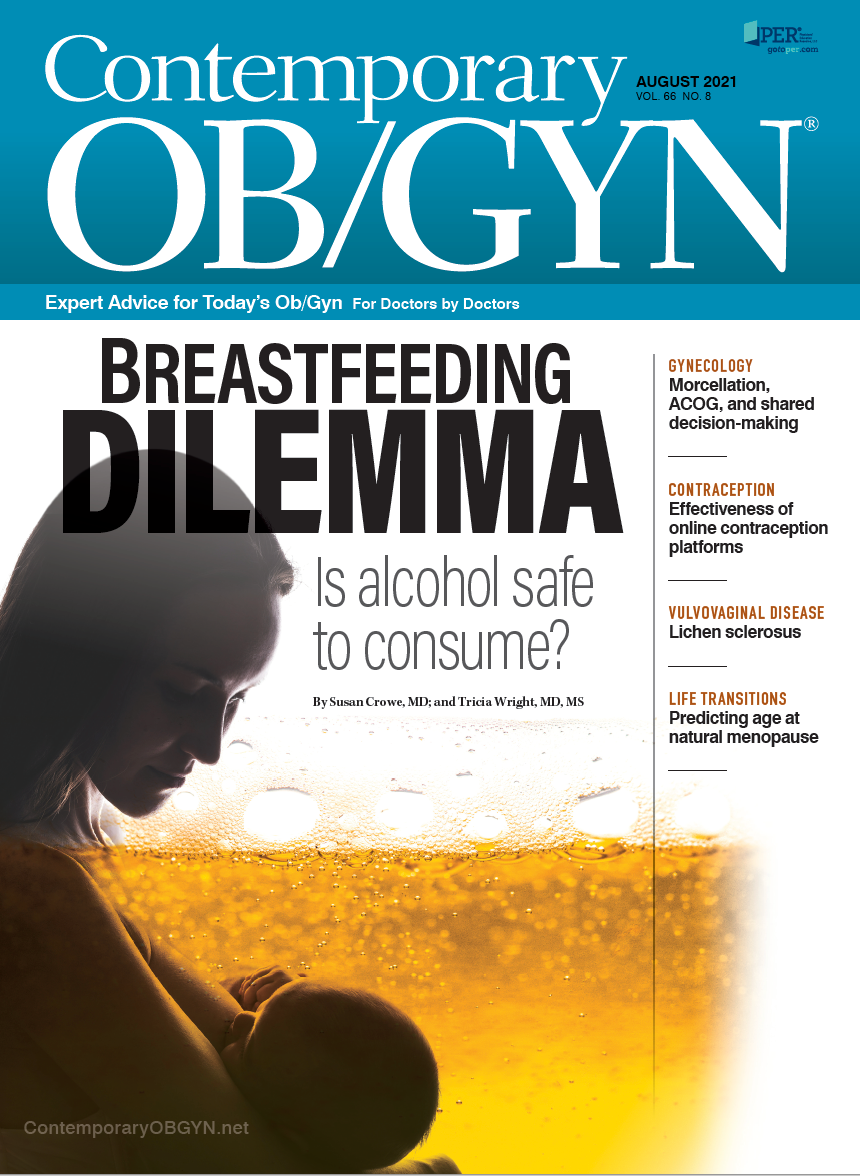Predicting the age at natural menopause
Besides sex hormone levels, predictors for the age at natural menopause (ANM) include irregularity of menstrual cycle, menopausal symptoms, life habits and socioeconomic factors, according to a retrospective study of 105 middle-aged women who kept bleeding diaries.
The study in the journal Menopause found that higher estradiol and follicle-stimulating hormone (FSH) levels, vasomotor symptoms and higher level of alcohol consumption were significant indicators of approaching natural menopause.
“We pursued this research topic because the accurate prediction of ANM could have many clinical implications and great significance in health promotion among postmenopausal women,” said principal investigator Eija Laakkonen, PhD, an Academy of Finland Research Fellow in aging and physiology at the Gerontology Research Center and Faculty of Sport and Health Sciences, University of Jyväskylä, in Finland.
Laakkonen told Contemporary OB/GYN® that for premenopausal women, “the accurate prediction of approaching menopause could be highly beneficial when making decisions about family planning and treatments for menopausal symptoms. Furthermore, ANM has been linked to cardiovascular disease, depression, osteoporosis and various cancers.”
Study participants were from the Estrogenic Regulation of Muscle Apoptosis (ERMA) study.
The investigators constructed 2 different easy-to-access ANM predictor models: a set of 32 non-self-reported covariates (including estradiol and FSH levels; menstrual cycle length) and a subset of 16 self-reported covariates (including smoking, education, and hormonal contraception).
“For the most part, the model predictors and their respective associations with ANM were in agreement with the literature,” Laakkonen said. “Thus, they will not come as a surprise to clinicians.”
However, some contradictory results were observed. “One interesting finding was that participants tended to increase their alcohol consumption when approaching menopause,” he said. “In fact, higher alcohol consumption was a significant predictor of the approaching menopause in our models.”
Conversely, smoking has been associated with an earlier age of menopause in several previous studies, “but we did not observe such association in our study,” Laakkonen said.
Because the study found a connection between lifestyle factors and the age at natural menopause, “clinicians can use this information to increase women’s awareness of the importance of a healthy lifestyle,” Laakkonen said. “But more studies on the subject are required for drawing conclusions about the causal relations.”
The authors noted that by gauging ANM, clinicians benefit in decision-making for use of contraception and treatments for menopausal symptoms in perimenopausal women.
Although the data set in the study was comprehensive and included vast numbers of candidate predictors that have been previously associated with ANM or are otherwise shown to fluctuate during the menopausal, “our data lacked some potentially strong predictors of the menopause, such as anti-Müllerian hormone levels, follicle counts and mother’s age at natural menopause,” Laakkonen said. “The impact of including these variables to the models would be worth investigating.”
Moreover, future studies using a similar methodological approach with a more comprehensive set of predictors and longer follow-up time “could lead to better predictive performance and enable the accurate prediction of ANM for women in their 30s or early 40s,” Laakkonen said.
The investigators also constructed a model using only easily accessible variables, “which clinicians can obtain by merely interviewing patients without any laboratory measurements,” Laakkonen said. “It is intriguing to envision developing this type of a model to a future online tool for clinicians and women themselves to estimate ANM.”
__
Disclosure
Laakkonen reports no relevant financial disclosures.
Reference
Hyvärinen M, Karvanen J, Aukee P, et al. Predicting the age at natural menopause in middle-aged women. Menopause. Published online April 14, 2021. Menopause. doi:10.1097/GME.0000000000001774

Low creatinine-to-cystatin C ratio linked to postmenopausal muscle loss
March 20th 2025A new study finds that postmenopausal women with a reduced creatinine-to-cystatin C ratio experience decreased muscle volume and slower walking speed, highlighting its role as a potential biomarker for muscle health.
Read More
